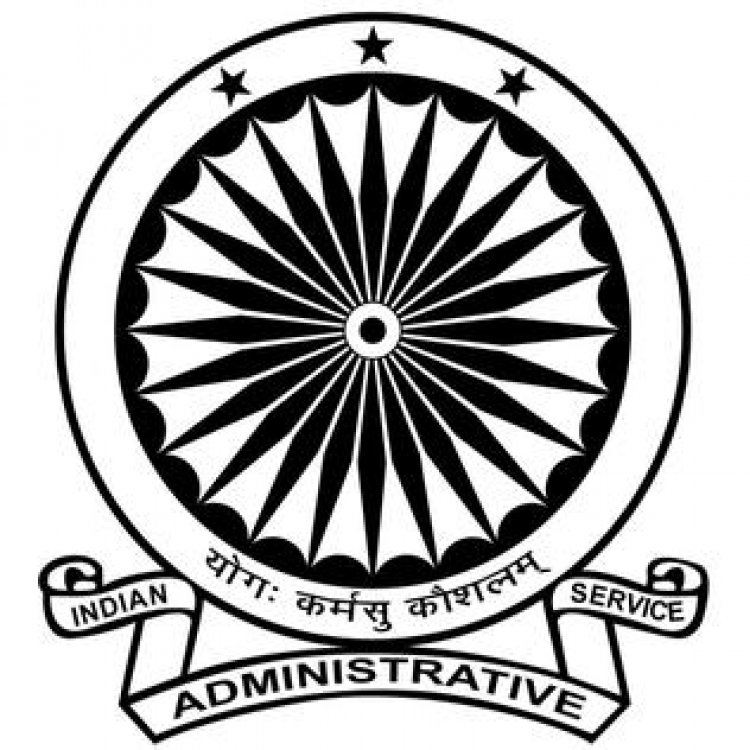All about Indian Administrative Service-IAS

The Indian Administrative Service (IAS) is the administrative arm of the All India Services. Considered the premier civil service of India, the IAS is one of the three arms of the All India Services along with the Indian Police Service and the Indian Forest Service. Members of these three services serve the Government of India as well as the individual states.
IAS officers may also be deployed to various public sector undertakings. As with other countries following the parliamentary system of government, the IAS is a part of the permanent bureaucracy of the nation and is an inseparable part of the executive of the Government of India. As such, the bureaucracy remains politically neutral and guarantees administrative continuity to the ruling party or coalition. Upon confirmation of service, an IAS officer serves a probationary period as a sub-divisional magistrate. Completion of this probation is followed by an executive administrative role in a district as a district magistrate and collector which lasts several years. After this tenure, an officer may be promoted to head a whole state administrative division, as a divisional commissioner. On attaining the higher scales of the pay matrix, IAS officers may lead government departments or ministries.

In these roles, IAS officers represent the country at the international level in bilateral and multilateral negotiations. If serving on a deputation, they may be employed in intergovernmental organisations such as the World Bank, the International Monetary Fund, the Asian Development Bank, the Asian Infrastructure Investment Bank, or the United Nations, or its agencies. IAS officers are also involved in the conduct of elections in India as mandated by the Election Commission of India.
History During the occupation of India by the East India Company, the civil services were classified into three – covenanted, uncovenanted and special civil services. The covenanted civil service, or the East India Company's Civil Service (HEICCS), as it was called, largely comprised civil servants occupying the senior posts in the government. The uncovenanted civil service was introduced solely to facilitate the entry of Indians onto the lower rung of the administration. The special service comprised specialised departments, such as the Indian Forest Service, the Imperial Police and the Indian Political Service, whose ranks were drawn from either the covenanted civil service or the Indian Army. The Imperial Police included many Indian Army officers among its members, although after 1893 an annual exam was used to select its officers. In 1858 the HEICCS was replaced by the Indian Civil Service (ICS), which became the highest civil service in India between 1858 and 1947. The last appointments to the ICS were made in 1942.
With the passing of the Government of India Act 1919 by the Parliament of the United Kingdom, the Indian civil services—under the general oversight of the Secretary of State for India—were split into two arms, the All India Services and the Central Services.[9] The Indian Civil Service was one of the ten All India Services.
In 1946 at the Premier's Conference, the Central Cabinet decided to form the Indian Administrative Service, based on the Indian Civil Service; and the Indian Police Service, based on the Imperial Police.
There is no alternative to this administrative system... The Union will go, you will not have a united India if you do not have good All-India Service which has the independence to speak out its mind, which has [the] sense of security that you will standby [sic] your work... If you do not adopt this course, then do not follow the present Constitution. Substitute something else... these people are the instrument. Remove them and I see nothing but a picture of chaos all over the country.
— Vallabhbhai Patel in the Constituent Assembly of India discussing the role of All India Services.,
When India was partitioned following the departure of the British in 1947, the Indian Civil Service was divided between the new dominions of India and Pakistan. The Indian remnant of the ICS was named the Indian Administrative Service, while the Pakistani remnant was named the Pakistan Administrative Service. The modern Indian Administrative Service was created under Article 312(2) in part XIV of the Constitution of India, and the All India Services Act, 1951.
| Zone | Cadres |
|---|---|
| Zone-I | AGMUT (Arunachal Pradesh-Goa-Mizoram and Union Territories), Himachal Pradesh, Uttarakhand, Punjab, Rajasthan and Haryana |
| Zone-II | Uttar Pradesh, Bihar, Jharkhand and Odisha |
| Zone-III | Gujarat, Maharashtra, Madhya Pradesh and Chhattisgarh |
| Zone-IV | West Bengal, Sikkim, Assam-Meghalaya, Manipur, Tripura and Nagaland |
| Zone-V | Telangana, Andhra Pradesh, Karnataka, Tamil Nadu and Kerala |
Responsibilities of an IAS officer
- To collect revenue and function as court officials in matters of revenue and crime (for the revenue courts and criminal courts of executive magistrates), to maintain law and order, to implement union and state government policies at the grass-roots level when posted to field positions i.e. as sub-divisional magistrates, additional district magistrates, district magistrates and divisional commissioners, and to act as an agent of the government in the field, i.e. to act as an intermediary between the public and the government.
- To handle the administration and daily proceedings of the government, including the formulation and implementation of policy in consultation with the minister-in-charge of a specific ministry or department.
- To contribute to policy formulation, and to make a final decision in certain matters, with the agreement of the minister concerned or the council of ministers (depending upon the weight of the matter), when posted at the higher level in the Government of India as a joint secretary, additional secretary, special secretary or secretary equivalent, secretary and Cabinet Secretary, and in state governments as secretary, principal secretary, additional chief secretary or special chief secretary and chief secretary.
What's Your Reaction?










































































